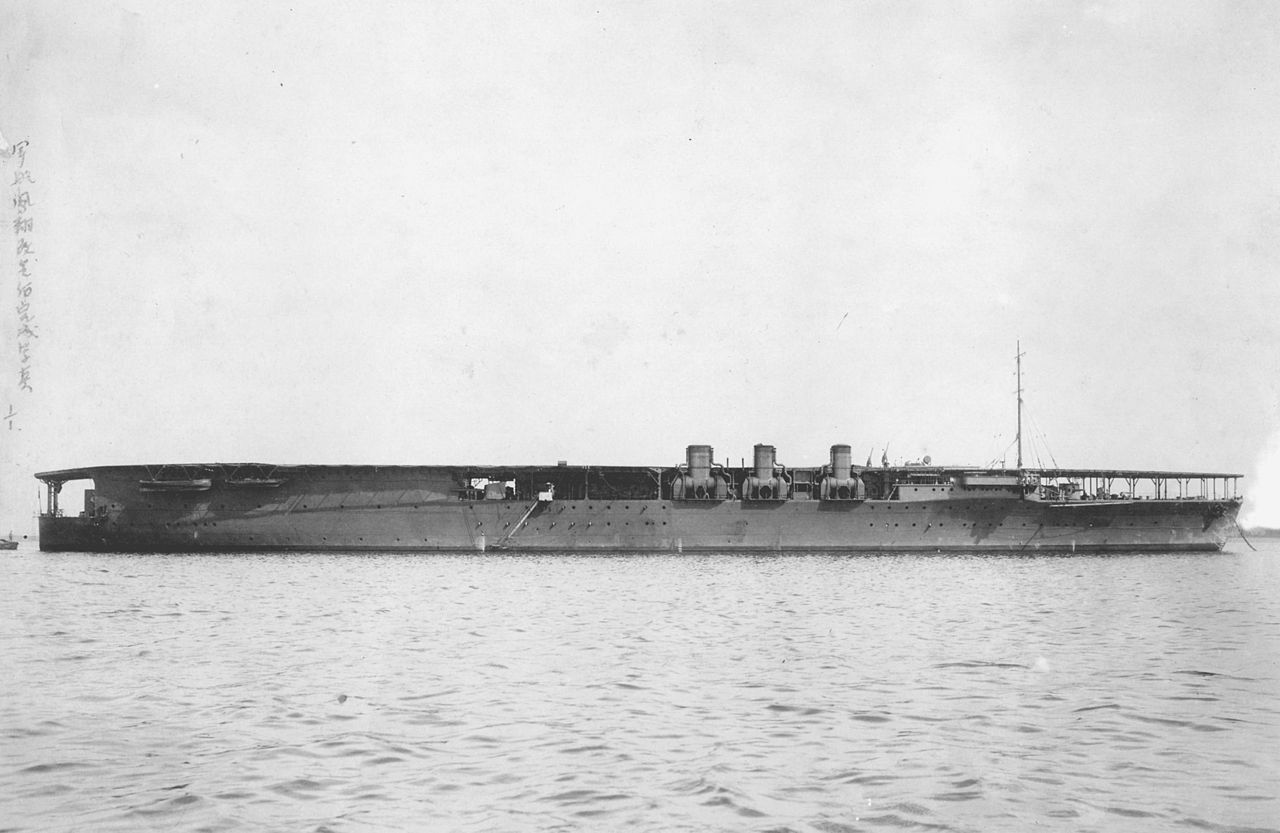Japanese Aircraft Carrier Hōshō
Hōshō was the world’s first commissioned ship that was built as an aircraft carrier, and the first aircraft carrier of the Imperial Japanese Navy (IJN). Commissioned in 1922, the ship was used for testing carrier aircraft operations equipment, techniques, such as take-offs and landings, and carrier aircraft operational methods and tactics. The ship provided valuable lessons and experience for the IJN in early carrier air operations. Hōshō’s superstructure and other obstructions to the flight deck were removed in 1924 on the advice of experienced aircrews.
During World War II, Hōshō participated in the Battle of Midway in June 1942 in a secondary role. After the battle, the carrier resumed her training role in Japanese home waters for the duration of the conflict and survived the war with only minor damage from air attacks. She was surrendered to the Allies at the end of the war and used to repatriate Japanese troops until she was scrapped in 1946.
| Type: | Aircraft carrier |
| Displacement: | 7,470 long tons (7,590 t) (standard)9,494 long tons (9,646 t) (normal) |
| Length: | 168.25 m (552 ft) |
| Beam: | 17.98 m (59 ft) |
| Draught: | 6.17 m (20 ft 3 in) (mean) |
| Installed power: | 8 small-tube boilers30,000 shp (22,000 kW) |
| Propulsion: | 2 shafts; 2 geared steam turbines |
| Speed: | 25 knots (46 km/h; 29 mph) |
| Range: | 8,680 nmi (16,080 km; 9,990 mi) at 12 knots (22 km/h; 14 mph) |
| Complement: | 512 |
| Armament: | 4 × single 14 cm (5.5 in) guns2 × single 8 cm (3 in) AA guns |
| Aircraft carried: | 15 |
















